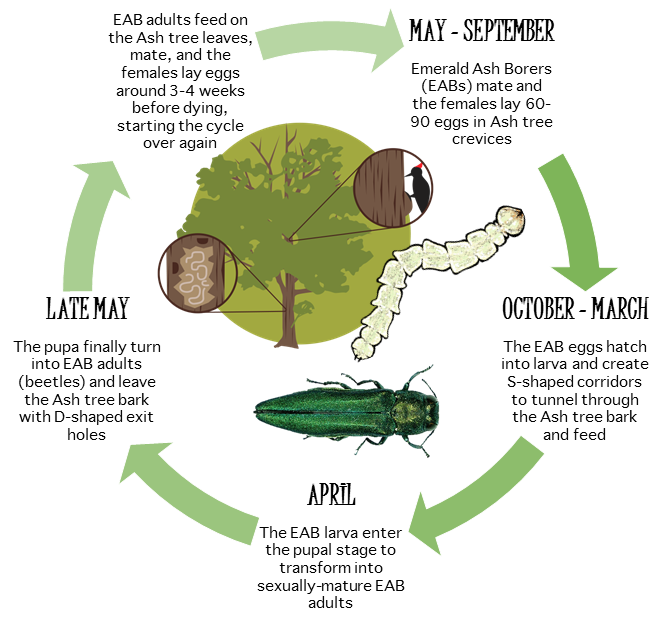Emerald ash borer (EAB), Agrilus planipennis, is a local invasive species. Native to Asia, the EABs are guessed to arrive to the U.S. on cargo ships or planes carrying solid wood packing material.
Why does this matter?
The EABs' invasion has cost the lives of hundreds of millions of Ash trees in the U.S. and Canada. They have been tracked to 31 U.S. states and 2 Canadian provinces (see map). These tiny insects are costing hundreds of millions of dollars to landowners, nursery operators, and the timber industry.
How are they doing it?
The EABs, like all other insects, have a specific life cycle they follow - from an egg to a larvae, from a larvae to a pupa, and from a pupa to an adult. The adults, however, are the least destructive. The larva feed on the Ash trees' conductive tissue, ultimately blocking the travel of nutrients and water throughout the tree.


What happens to the Ash trees?
Once infested, the Ash trees will die within five years. Their tissue will deplete as the larva feed. Symptoms of an infested Ash tree include S-shaped tunnels beneath bark (from larva), D-shaped holes on the outside of the bark (adults), thinning of tree crown, new growth on the trunk, and bark chipped off from woodpeckers. Woodpeckers love to feed on this pest!
How can YOU help?
Though the EABs' effects are almost irreversible, there are a couple of things you can do to save your Ash tree:
- If caught early in the infestation, contact a local arborist to see if the tree is healthy enough for injection treatments.
- DO NOT TRANSPORT FIREWOOD ACROSS COUNTY AND STATE LINES! It is prohibited in Kentucky to transport firewood across county lines. This is because of the EAB infestation. Learn more here.
- Report found EABs to your County Extension office. Click here for Boone's! If you can, grab a jar to collect the suspected EAB and freeze it for easy identification.
